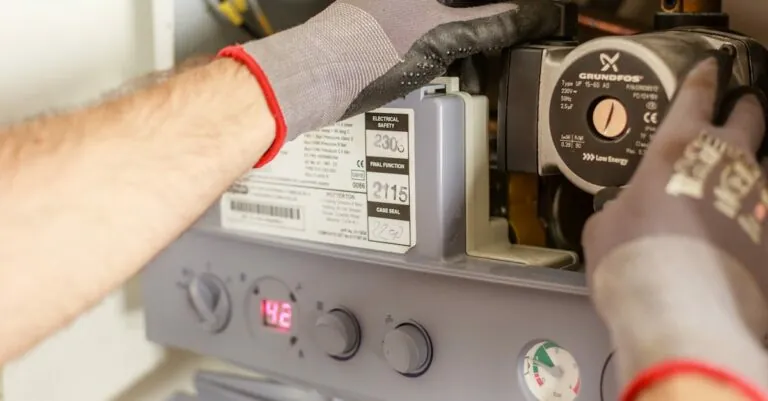In the wild world of freelancing, getting paid shouldn’t feel like a game of hide and seek. Yet, many freelancers find themselves lost in a maze of payment methods that can be as confusing as a cat in a dog park. Whether it’s PayPal, direct bank transfers, or the latest trendy app, choosing the right payment method can make or break a freelancer’s cash flow.
Table of Contents
ToggleOverview of Freelancer Payment Methods
Freelancers can choose from several payment methods to receive compensation for their services. PayPal stands out as a popular option due to its widespread use and ease of access. Many freelancers favor it for its quick transactions and international capabilities. Direct bank transfers also offer a secure way to receive payments directly from clients. This method tends to have lower fees compared to other options, making it financially advantageous.
Moreover, alternative payment platforms, such as Stripe and TransferWise, provide additional flexibility. These platforms cater to varying payment needs and often support multiple currencies. Venmo and Cash App have grown in popularity too, particularly among freelancers working with local clients. Quick payment through these apps appeals to those who value speed and convenience.
Freelancers should prioritize safety when selecting a payment method. Payment protection options can help ensure that they receive compensation for completed work. Invoicing software often integrates with various payment options, streamlining the billing process. Productivity enhances when freelancers can manage their payments efficiently.
Considerations such as transaction fees and payment speed influence the choice of payment method. Freelancers may experience different timelines for fund availability, affecting cash flow. Research is essential to select the most advantageous method. Each payment option provides unique benefits tailored to individual preferences and business models.
Popular Payment Methods for Freelancers

Freelancers benefit from various payment methods that differ in speed, security, and convenience.
PayPal
PayPal remains a top choice for freelancers due to its quick transactions and global reach. Users can send and receive money in multiple currencies with minimal effort. Transaction fees generally range from 2.9% plus $0.30 per transaction, making it a cost-effective option for many. Many freelancers appreciate the buyer protection PayPal offers, ensuring safety during transactions. Invoicing through PayPal further simplifies billing processes, allowing freelancers to send professional-looking invoices directly.
Direct Bank Transfers
Direct bank transfers provide a secure way for freelancers to manage their earnings. With lower fees compared to some digital platforms, many freelancers prefer this method for larger payments. Funds typically deposit directly into the freelancer’s bank account, promoting peace of mind. This method does require sharing bank details, raising security considerations. Still, the reliability and lower risk of chargebacks encourage freelancers to consider direct transfers for various projects.
Wire Transfers
Wire transfers offer a direct and efficient method for freelancers, particularly for international payments. Banks commonly execute these transfers, ensuring that funds move safely and quickly. However, higher fees often accompany this method, sometimes exceeding $30 per transfer. Processing times can vary, with most transactions completed within one to three business days. Freelancers engaged in high-value gigs frequently choose wire transfers for their reliability, despite the associated costs.
Emerging Payment Options
Freelancers increasingly explore new payment methods to enhance cash flow and convenience. Emerging options like cryptocurrency and mobile payment applications offer unique advantages.
Cryptocurrency
Cryptocurrency provides freelancers with a decentralized payment option, enabling almost instantaneous transactions. Bitcoin, Ethereum, and other currencies facilitate international payments without high fees. Security stands out as a key benefit, due to blockchain technology, which minimizes fraud risks. Some platforms, such as Coinbase and BitPay, simplify cryptocurrency transactions. Acceptance is growing, as more businesses recognize the advantages of this digital currency. However, volatility remains a concern, as exchange rates can fluctuate significantly.
Mobile Payment Apps
Mobile payment apps like Venmo, Cash App, and Zelle streamline payments for freelancers with ease of use. Instant transfers allow for quicker payment settlement without delays. Popularity among younger users drives adoption rates, facilitating peer-to-peer payments. Integrating these apps into daily routines makes financial management simpler. Most offer minimal to no fees, maximizing earnings. While they’re great for domestic transactions, international transfers might present challenges. These mobile solutions enhance payment flexibility for freelancers navigating various client needs.
Considerations When Choosing Payment Methods
Choosing the right payment method requires careful thought about various factors. Freelancers often find that understanding fees and charges can significantly affect their overall earnings.
Fees and Charges
Freelancers face a variety of fees associated with payment methods. PayPal typically charges transaction fees of 2.9% plus $0.30 for domestic transactions, while international fees can reach up to 4.4%. Direct bank transfers usually have nominal fees, making them cost-effective for larger sums. Wire transfers, however, often incur higher costs, particularly for international payments, with fees averaging around $25. Examining these costs helps freelancers select methods that maximize profit while minimizing expenses.
Currency Conversion
Currency conversion can complicate international transactions for freelancers. Many payment platforms, including PayPal, impose additional conversion fees, usually between 3% and 4% for currency exchange. Direct bank transfers might offer better exchange rates without these extra charges, but they require transparency in the conversion process. Using cryptocurrency can eliminate conversion fees altogether, although volatility remains a concern. Understanding the implications of currency conversion aids freelancers in making informed decisions about their payment methods.
Navigating the world of freelancer payment methods can feel overwhelming but understanding the options available makes it easier. Each method has its unique benefits and drawbacks that can significantly impact a freelancer’s cash flow and overall experience. By weighing factors like transaction speed fees and security freelancers can make informed choices that align with their specific needs.
Staying updated on emerging payment trends like cryptocurrency and mobile apps also opens new avenues for efficient transactions. Ultimately the right payment method can enhance a freelancer’s financial stability and streamline their business operations.




